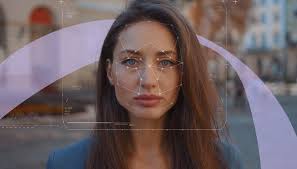Deepfakes emerged as artificial media which artificial intelligence produces realistically have shifted from being a curiosity into a serious worldwide concern. The criminal activities using deepfake technology have created a broad legal discussion that includes political manipulation with identity theft and non-consensual explicit content creation.
So, are deepfakes illegal? The answer is complicated. Several parts of deepfakes face criminalization in specific regions yet no common legal system exists to regulate them across all territories. The future of 2025 shows clear indications of an upcoming transformation. This year marks a critical moment in the development of synthetic media law because governments and regulators together with tech companies actively respond with great urgency.
What Are Deepfakes, and Why Are They a Concern?
Artificial intelligence through GANs enables deepfakes to produce convincing fake representations of genuine human images, audio and video content. Some applications of deepfakes present no harm except for beneficial uses like entertainment and historical documentary restorations whereas others can lead to severe consequences.
Deepfakes have been used to:
- The fabrication of political disinformation spreads through artificial creation of speeches and interviews.
- Thieves use duplicate voice and video recordings to pretend to be corporate leaders in online scams.
- People can create unauthorized sexual content primarily against women through this means.
- The creation of fake evidence becomes possible for both legal and business dispute situations.
- The increased quality of deepfakes together with slowly improving detection capabilities results in a rapid uphill surge of potential harmful uses. The increasing calls for legal intervention result from this development.
Are Deepfakes Illegal?
Each jurisdiction maintains different rules about deepfakes based on how people use them. In general:
- The act of creating deepfakes along with their distribution does not violate any existing legislation.
- The application of deepfakes for deception and harm as well as financial fraud constitutes illegal conduct.
Key Legal Applications
Civil lawsuits may result when a person publishes fake videos that damage another person’s reputation.
Using deepfakes to pretend as someone else for stealing money from people or businesses constitutes a criminal fraud offense.
The act of threatening or humiliating a person through deepfaked content can create violations under laws that protect privacy and prevent harassment.
The distribution and production of sexually explicit deepfakes made from real people without their permission is prohibited under the laws of numerous nations.
Laws dealing with AI enforcement face many problems from brick-and-mortar inconsistencies and from being out of date due to their unreliability for fresh AI technology solutions.
2025: Why It Could Be the Turning Point
The upcoming five years create multiple conditions that support deepfake regulation becoming a critical turning point.
1. The Rise of AI Regulation Worldwide
The EU AI Act represents the world’s first extensive regulatory structure dedicated to AI which incorporates requirements about AI transparency and user accountability. Deepfakes require proper labeling under the law while unauthorized use of deepfakes may result in severe legal consequences.
The DEEPFAKES Accountability Act serves as bipartisan U.S. federal legislation while states like California, Texas and Virginia have started passing laws that aim to stop deepfake abuse in election periods and explicit media distribution.
2. Political Election Safeguards
Major elections in the United States and India as well as Europe are scheduled for 2025 which makes deepfakes a critical issue of concern. Changed political content that circulated previously in society sparked public confusion and factionalism while undermining public trust between people. Political leaders have taken notice of the requirement for immediate legal safeguards that protect electoral integrity from widespread damage.
3. Growing Victim Advocacy
People who experience non-consensual deepfakes use their voices to fight against such abuses. Public backing for enhanced safety measures has intensified due to well-known instances that include famous people alongside news reporters and ordinary citizens. The rise of digital rights laws gets attention from state authorities who aim to provide users more authority over their appearance data.
4. Big Tech Under Pressure
Social media platforms together with TikTok along with Meta and X as previously known as Twitter experience increasing pressure to display AI-generated content warnings and develop better content detection systems. The EU together with U.S. regulatory bodies have started investigations into manipulated media management practices by these platforms because future noncompliance could lead to severe penalties.
What Could Change?
The legal environment will transform through multiple changes which will become visible by 2025.
All synthetic media must carry visual identification tags which identify synthetic content particularly in political and sensitive situations.
The law may introduce tougher punishment for anyone who distributes unauthorized content showing someone without their consent particularly when the content involves fake pornographic images.
Deepfake content removal laws require platforms to eliminate dangerous deep fake materials after getting notified about them.
Under new digital identity protection laws people will obtain rights to sue AI impersonators and other rights regarding their digital identity.
Final Thoughts
Deepfakes are not going away. Society now faces critical decisions on how to support freedom of innovation through expression while preventing attacks which endanger people’s security.
The solution needs legal certainty at this present moment. Deepfakes are presently exempt from legal penalties but the laws may change during the year 2025.
The legal trajectory of deepfakes becomes clearer through upcoming legislature as well as juridical decisions and worldwide international standards.The main issue we face today is not about deepfakes being illegal or not. The current scenario has transformed into a query about how we can achieve responsible application of deepfakes.



